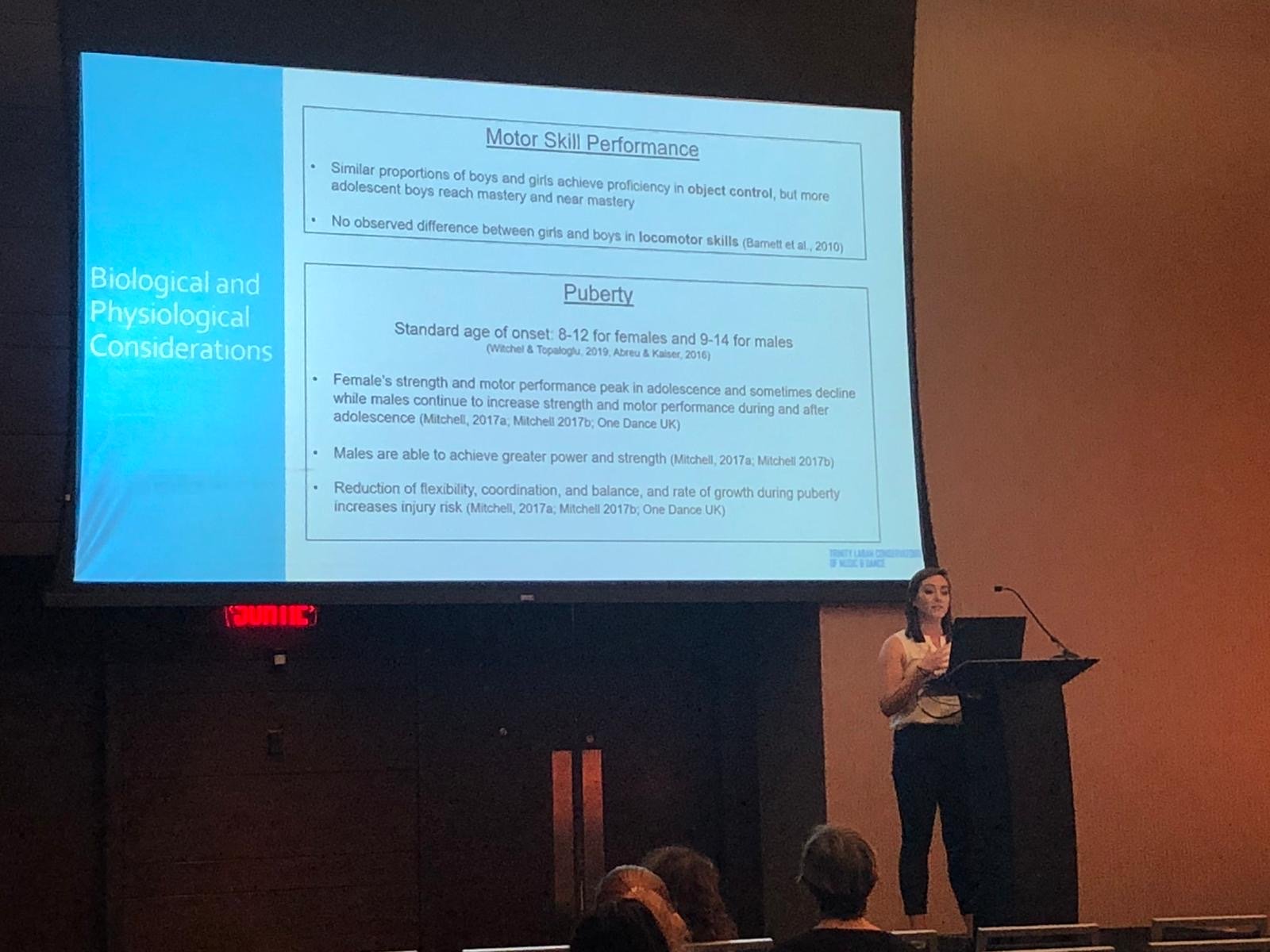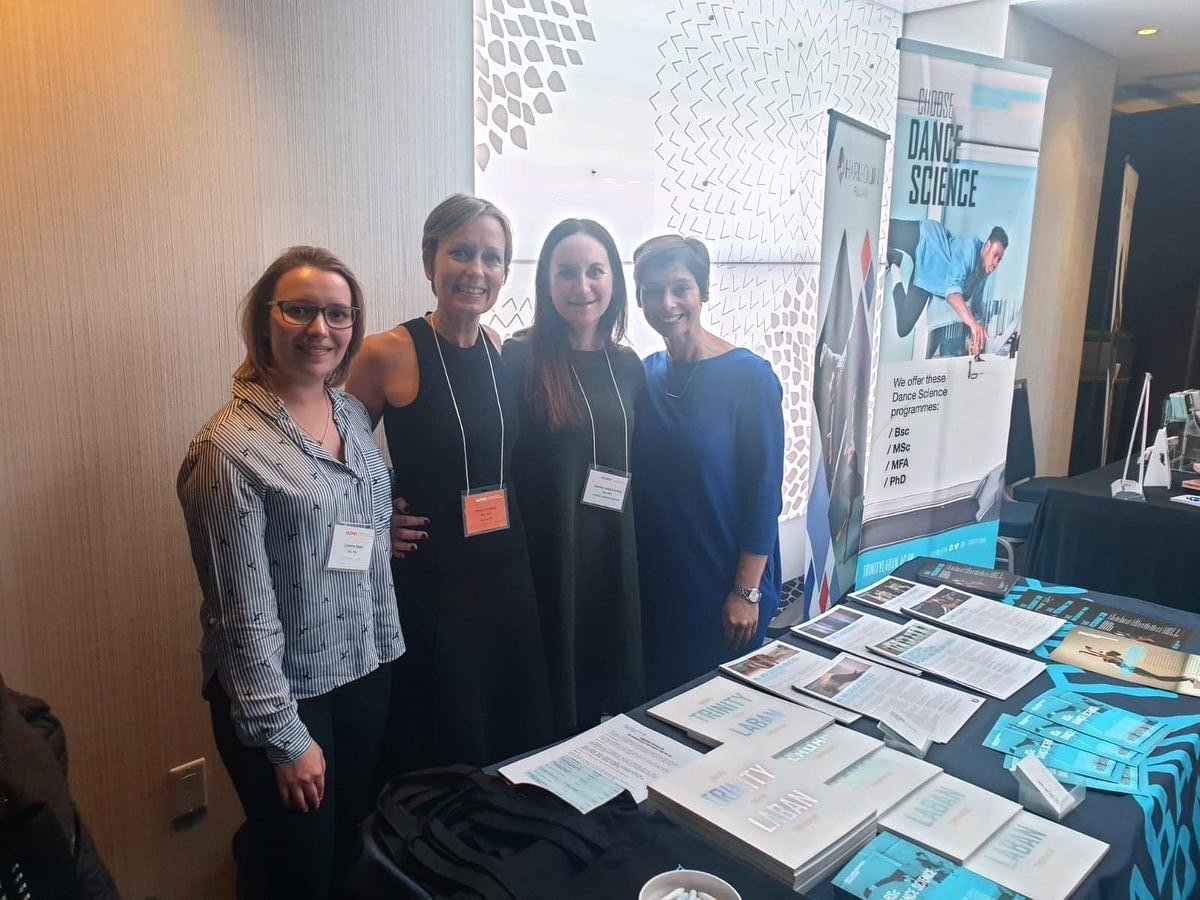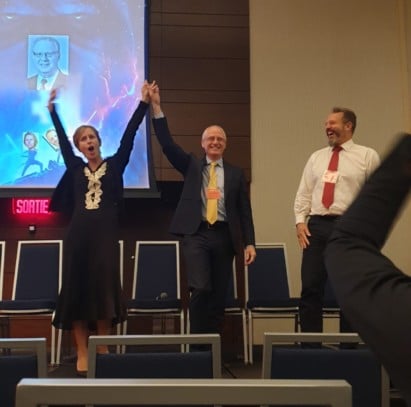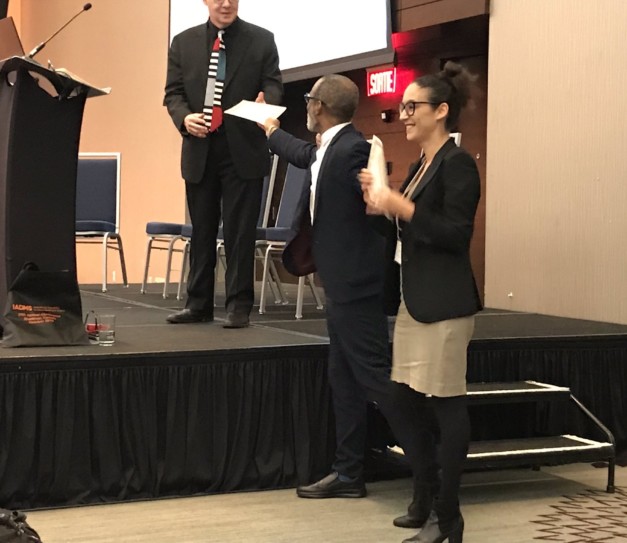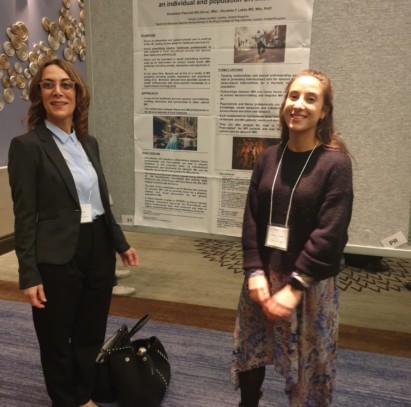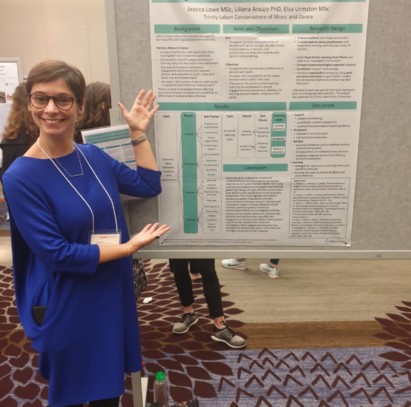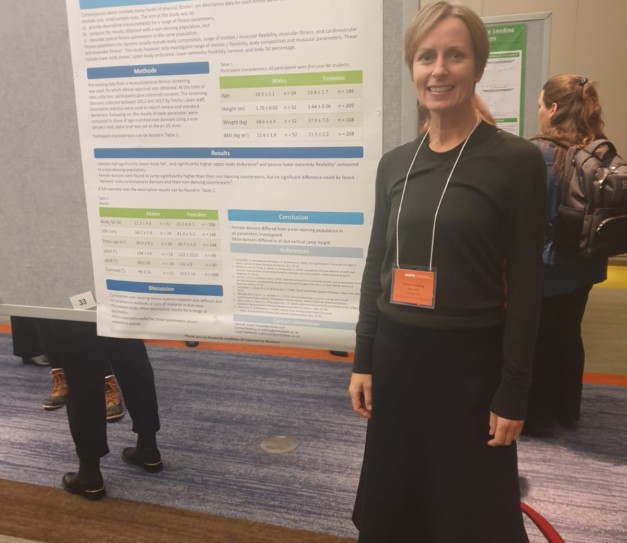This year Trinity Laban faculty, alumni and students presented 41 posters and research presentations. See the list below for all research shared at the conference.
IADMS Research List 2019
Redding, E., Stancliffe, R., & Jobbins, V. Dance for Health: a ten-year program of work. (Professor Emma Redding, Dr Rebecca Stancliffe, & Veronica Jobbins)
Steel, L., Redding, E., Nordin-Bates, S., & Aujla, I. The relationship between hypermobility and proprioception among adolescent dancers. (Leanne Steel & Professor Emma Redding)
Martin-Wylie, E., Redding, E., & Urmston, E. Creative dance, well-being, and older adults: an arts-informed photo elicitation study. (Ellis Martin-Wylie, Professor Emma Redding, & Elsa Urmston)
Yutzey, E., & Redding, E. Gender separation in training: right or wrong? (Elizabeth Yutzey & Professor Emma Redding)
Redding, E., Lefebrve-Sell, N., Rafferty, S., Bourne-Collins, C., Brandt, R., & Schober, S. An innovative approach refining contemporary dance training within a conservatoire. (Professor Emma Redding, Dr Naomi Lefebvre-Sell, Sonia Rafferty, Colin Bourne-Collins, Rosemary Brandt, & Stephanie Schober)
Jussli, H., Redding, E., & Clements, L. Profiles of vocational dance students: body composition, flexibility, muscular power and endurance. (Hannah Jussli, Professor Emma Redding, & Dr Lucie Clements)
Araújo, L. S., & Rafferty, S. Stress, coping and psychological skills of dance and music students: evaluating psychological wellbeing in practice. (Dr Liliana S. Araújo & Sonia Rafferty)
Morris, M., & Rafferty, S. Integrating dance science principles: the value of endorsing knowledge, understanding and application. (Maggie Morris & Sonia Rafferty)
Paschali, A., & Araújo, L. S. Health promotion among dance students in higher education: a qualitative investigation of experiences and perceptions of health and wellbeing. (Anastasia Paschali & Dr Liliana S. Araújo)
Clarke, F., Koutedakis, Y., Wilson, M., & Wyon, M. An overview of the research on dancers’ balance ability: implications for future methodological approaches. (Frances Clarke)
Fortin, S., Maggs, C., Lewton-Brain, Wilkie, A., & Boissinot, L. Creating an artiste – a panel discussion. (Peter Lewton-Brain)
Descoteaux, J., Urmston, E., Araújo, L. S., Lefebvre-Sell, N.,Pickard, A., & Dumont, A. Contributions of qualitative research in dance medicine and science: what can it add? (Elsa Urmston, Dr Liliana S. Araújo, &, Dr Naomi Lefebvre Sell)
Yu, H. T., & Brouner, J. Directional preferences in pirouettes en dehors: a kinematical analysis. (Heidi Tung Yu & Dr James Brouner)
Rice, P. E., Yutzey, E. F., Copping, L. F., Haber, C. M., Hornyak, E. K., Meder, C. T., Steel, L., & Descoteaux, J. The research process for students in dance medicine and science. (Elizabeth F. Yutzey, Lauren F. Copping, & Leanne Steel)
Yutzey, E., & Rice, P. E. Student and young professional networking workshop. (Elizabeth Yutzey)
Jenkins, E. Move Dance Feel: exploring dance and wellbeing with women affected by cancer. (Emily Jenkins)
Critchley, M., Kenny, S., Ritchie, A., Chambers, K., & McKay, C. Injury associated with dance education: a systematic review. (Dr Sarah Kenny & Katy Chambers)
Wyon, M., & Redding, E. Dance science or sport science? (Professor Emma Redding)
Lowe, J. M. A., Araújo, L. S., & Urmston, E. An investigation of the learning styles of dancers with specific learning difficulties and their experiences in higher education vocational training. (Jessica Morgan Alexandra Lowe, Dr Liliana S. Araújo & Elsa Urmston)
Pooley, A., Araújo, L. S. & Clements, L. Exploration of the creative process. (Alexandra Pooley, Dr Liliana S. Araújo, & Dr Lucie Clements)
Jussli, H., Redding, E., & Clements, L. Profiles of vocational dance students: body composition, flexibility, muscular power and endurance. (Hannah Jussli, Professor Emma Redding, & Dr Lucie Clements)

